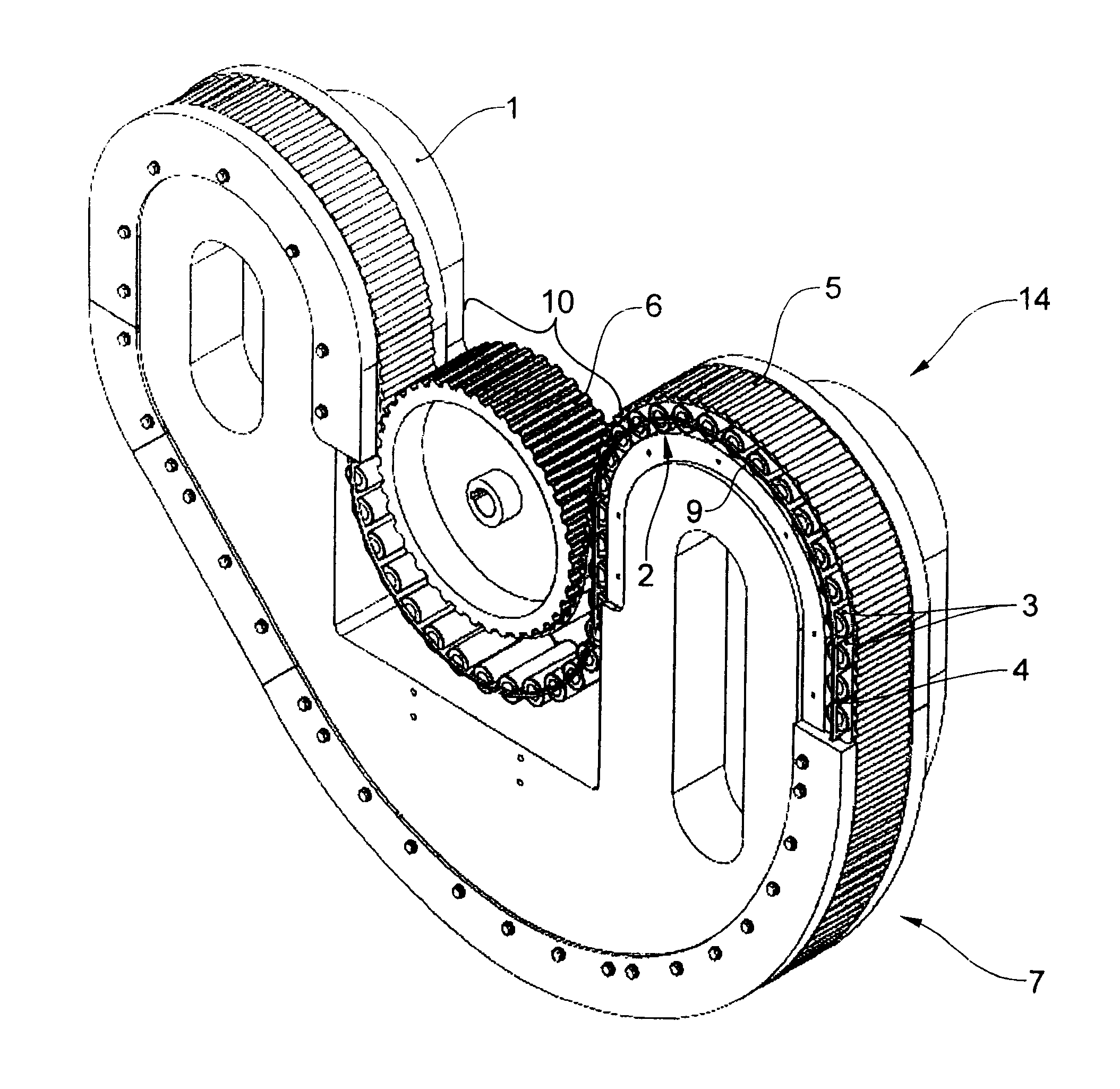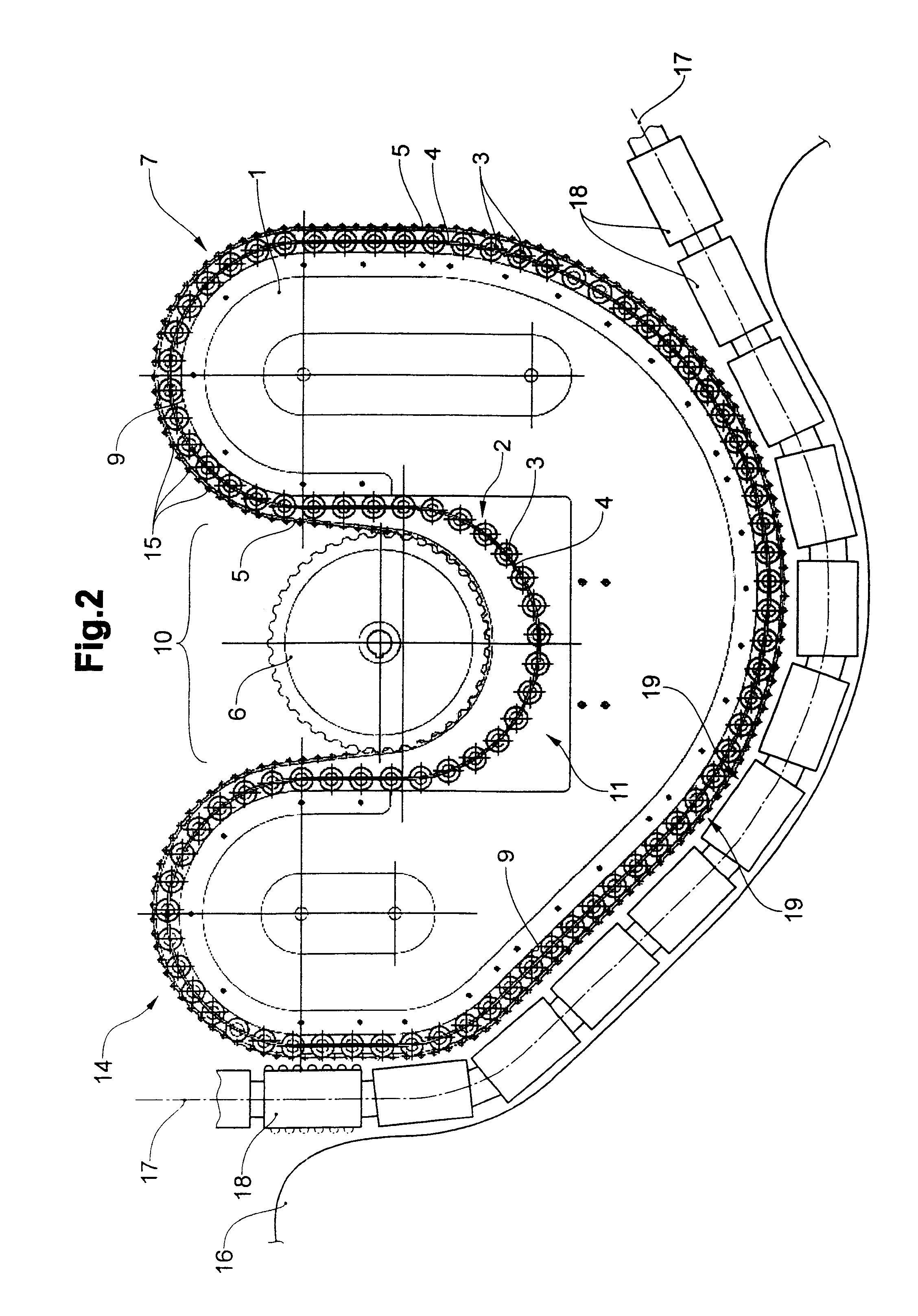Drive for conveyor means or conveyed objects
a technology of conveying objects and conveyors, applied in the direction of conveying parts, conveyors, transportation and packaging, etc., can solve the problem of limited rotation of the roller body
- Summary
- Abstract
- Description
- Claims
- Application Information
AI Technical Summary
Benefits of technology
Problems solved by technology
Method used
Image
Examples
Embodiment Construction
[0030]FIG. 1 depicts a perspective view of a drive unit 14, and FIG. 2 a cross section through a drive unit 14. The drive unit 14 comprises a central body 1, with a roller body 2 that runs in an orbital track 7. The roller body 2 comprises a flexible cage belt 4 with rollers 3 mounted therein. The rollers 3 roll upon a contact surface 9 of the orbital track 7. A toothed belt 5 is mounted against the roller body 2 such that it can roll thereupon. The toothed belt 5 functions as the driven element for the driving of further objects not depicted here. The toothed belt can also—differently than is shown here—be formed as a lugged belt, i.e. with lugs 15 that are spaced more substantially apart from one another, corresponding for example to a timing gap of the objects to be conveyed.
[0031]The toothed belt 5 is driven by a drive wheel, preferably a gear wheel or pinion wheel. The toothed belt 5 loops around the drive wheel 6 in a drive section 10 of the drive unit 14. For this purpose, th...
PUM
 Login to View More
Login to View More Abstract
Description
Claims
Application Information
 Login to View More
Login to View More - R&D
- Intellectual Property
- Life Sciences
- Materials
- Tech Scout
- Unparalleled Data Quality
- Higher Quality Content
- 60% Fewer Hallucinations
Browse by: Latest US Patents, China's latest patents, Technical Efficacy Thesaurus, Application Domain, Technology Topic, Popular Technical Reports.
© 2025 PatSnap. All rights reserved.Legal|Privacy policy|Modern Slavery Act Transparency Statement|Sitemap|About US| Contact US: help@patsnap.com



